Circling Under the Chuppah - Modern Changes
As a wedding rabbi for interfaith couples, I help my brides and grooms carefully think through all the Jewish wedding rituals and customs so that their Jewish-interfaith ceremony will be the best reflection of them as a couple, and of the traditions they hold dear. Whether it’s in Ohio, Kentucky, Michigan, or Pennsylvania, my couples have had all kinds of different reactions to this widely-recognized Jewish wedding custom.
As I’ve mentioned a hundred times before, the Jewish faith and culture miraculously shifts, ebbs, and flows from generation to generation to accommodate and reflect changes in culture and belief among its members. A great many couples find the meaning of the circling ritual to be fundamentally misogynist. Though I tend to disagree with this view, I do understand and feel deeply the wish to make our ceremonies more visibly egalitarian. Luckily, with this ritual, it’s easy enough. Many couples have each partner circle three times, leaving the final circle to be walked around one another (in what I like to call the do-si-do!) Of course, we can find a symbolic meaning for almost any number in Jewish tradition, and many couples choose to make three circles or only one! Modern couples also invite different people to walk with them under the chuppah, or carry family heirlooms as they walk, representing the gifts of heritage, wisdom, and strength their families passed down to them. Of course, couples choose all kinds of different readings to place alongside this ritual, whether it’s an explainer from the officiant, a formal reading by a friend or family member they’ve chosen, or even a simple “explainer” in a wedding ceremony program.
Though I’ve never personally officiated a wedding where this happened, I personally think it would be cool for the two people getting
Ultimately, circling can be a canvas for self-expression, allowing anyone to infuse their personalities into this ancient tradition. Don’t be afraid to modify it to more closely reflect circling from your beloved’s tradition - for example, you could hold hands or wear wreaths. Changes that combine your two traditions, instead of letting one subsume the other, are best.
Downsides
While the circling ritual is rich in symbolism, it's not without potential concerns. My couples are most commonly worried about tripping during the process, and ruining clothing/heirlooms/photos. Most of all, brides and grooms like to feel polished and pulled-together on their big day, and doing this awkward and unfamiliar choreography can really ruin that for a lot of people. Another common concern is time - especially if a couple doesn’t plan a special song or reading for this time, it can feel like walking in these circles will last FOREVER. Last, unlike many other rituals, circling under the chuppah is a VERY strongly visual symbol of a Jewish wedding. Lots of interfaith couples worry about making the ceremony look “weighted” in favor of one tradition or another. They are often also worried about something worse: making their family members feel alienated from the ceremony, since it’s so foreign to what they’re used to. Brides and grooms don’t want their guests to be bored or “weirded out,” and aside from anxiety of tripping or looking silly, this is the main reason couples decide not to incorporate circling.
That said, let me be a cheerleader for at least considering this ritual at your wedding!
Benefits
The benefits of the circling ritual are vast. It brings a surge of "Big Jewish Wedding Energy," adding a touch of humor to the proceedings. Nervous energy becomes endearing, allowing parents to play a non-speaking yet significant role. Incorporating heirlooms, satisfying bubbe's happiness, and providing opportunities for musical interludes make this ritual a valuable addition to any wedding ceremony.
Advice
For those considering the circling ritual, practice becomes key. While it might seem lengthy, make sure to complete ALL the cirlces in your rehearsal. Don’t take your ability to do this gracefully for granted!
While you’re doing the circling, fill in the “dead air” with an “explainer” from the officiant. You could also have someone come up and do a reading that refers to the meaning of the circles, WHILE doing the circling. Ask your parents and family members if they’re looking forward to seeing you and your beloved do this ritual as part of your wedding. It may be more important to them than you thought, and that might change your mind about whether or not to include it.
In conclusion, the circling ritual in Jewish weddings weaves together history, symbolism, and contemporary expressions of love. Embracing its origins, understanding its variations, and appreciating its significance enriches the wedding ceremony, making it a unique and memorable experience.

